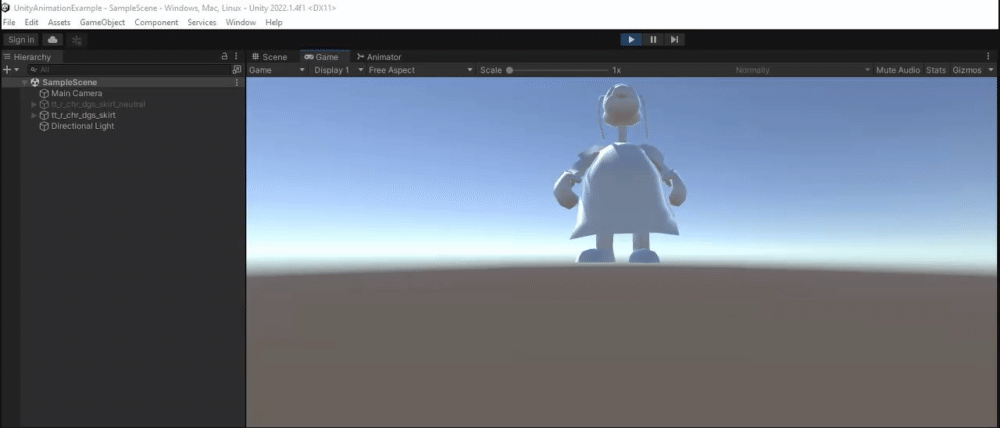- this is not a humanoid following the godot humanoid profile
- This looks like a Blender Rigify skeleton so it has non connected skeletons which doesn't fit the godot engine profile
- Since the retargeting feature only works on humanoid profiles, bone and animations cannot be automatically renamed or made matching
- Godot Engine 4.0 does not have a IK retargeting functionality.
- Also




 So something does seem to be wrong with the .gltf models in your attached project, possibly. Since glTF is Godot's format of choice, this is still a workflow problem that affects Godot and needs to be figured out.
So something does seem to be wrong with the .gltf models in your attached project, possibly. Since glTF is Godot's format of choice, this is still a workflow problem that affects Godot and needs to be figured out. Here is Godot, playing the same animation from the converted neutral.glb on the original .glb (I used "Import As" -> "AnimationLibrary" for this test, but I do not believe it makes a difference.)
Here is Godot, playing the same animation from the converted neutral.glb on the original .glb (I used "Import As" -> "AnimationLibrary" for this test, but I do not believe it makes a difference.)




 You can see how all these unnecessary tracks now show up in Godot, but we do have our 6.3 degree rotation and it technically makes this animation play correctly.
You can see how all these unnecessary tracks now show up in Godot, but we do have our 6.3 degree rotation and it technically makes this animation play correctly.
Godot version
4.0.beta12.mono.official [3c9bf4bc2]
System information
Windows 11, RTX 2060 SUPER, Forward+
Issue description
I have a model with animations broken up into separate glTF files. Each file has an identical setup except for a differing animation. My expectation is that when I import an animation saved from within another scene, I expect the animation to work the same as it does in the scene that saved it. This is NOT the case, and, as you'll see, when I import the animation into the animation library of the base model I get a "slanted" result.
Steps to reproduce
How to Reproduce w/Reproduction Project
Minimal reproduction project
ReproductionProject.zip
NOTE: YOU DO NOT NEED THE MATERIALS OR THE SCRIPT TO REPRODUCE THIS ISSUE. IGNORE ANY DEPENDENCY ISSUES